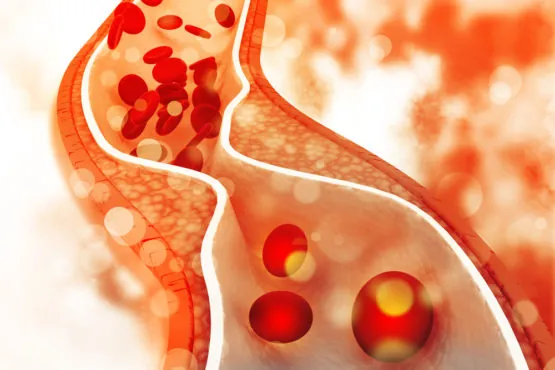Researchers have found out how LDL cholesterol is able to enter our cells with the help of two proteins that form a doorway into the cell. The findings have ramifications for treating heart disease, which is currently the world’s greatest killer.
Revealing how LDL gets into our cells
We have all likely heard about good and bad cholesterol, with high-density lipoprotein (HDL) cholesterol being considered good and low-density lipoprotein (LDL) cholesterol being bad. While this popular summary is somewhat simplistic given that some LDL cholesterol is needed for the body to function correctly, it is true that too much LDL in the bloodstream can be a problem.
LDL cholesterol tends to build up in the walls of our arteries, causing a reduction of blood flow, which typically leads to heart disease, the end result of which is a heart attack or stroke.
In a new study, researchers from the University of New South Wales have discovered how LDL enters our cells by identifying two proteins that function like a gateway in the membrane wall to permit access [1]. This pair of membrane proteins also presents a potential target for drugs that can block their activity and help lower LDL cholesterol levels in the bloodstream.
The researchers made this discovery while investigating the role of two proteins, NPC1 and NPC2, and how they facilitate the transport of LDL cholesterol into the cell. Thanks to the use of highly advanced imaging equipment, they were able to look at the proteins close to the atomic level and see exactly how they transport the LDL inside the cell.
The lysosomes act as a protective barrier in our cells and work like garbage disposal units, breaking down unwanted proteins and destroying invaders. NPC1 and NPC2 essentially act like a key to a door, working in unison to usher the LDL cholesterol into the cell without it being destroyed by the lysosomes.
LDL is important for our cells and tissues, including muscle growth and development; however, too much in the bloodstream can clog our arteries and lead to the development of heart disease. By creating drugs that target NPC1 and NPC2, there is the potential to increase how much LDL cells uptake.
Lysosomal cholesterol egress requires two proteins, NPC1 and NPC2, whose defects are responsible for Niemann-Pick disease type C (NPC). Here, we present systematic structural characterizations that reveal the molecular basis for low-pH-dependent cholesterol delivery from NPC2 to the transmembrane (TM) domain of NPC1. At pH 8.0, similar structures of NPC1 were obtained in nanodiscs and in detergent at resolutions of 3.6 A˚ and 3.0 A˚, respectively. A tunnel connecting the N-terminal domain (NTD) and the transmembrane sterol-sensing domain (SSD) was unveiled. At pH 5.5, the NTD exhibits two conformations, suggesting the motion for cholesterol delivery to the tunnel. A putative cholesterol molecule is found at the membrane boundary of the tunnel, and TM2 moves toward formation of a surface pocket on the SSD. Finally, the structure of the NPC1-NPC2 complex at 4.0 A˚ resolution was obtained at pH 5.5, elucidating the molecular basis for cholesterol handoff from NPC2 to NPC1(NTD).
Conclusion
Now that the researchers understand how LDL enters the cell with the help of NPC1 and NPC2, they can begin to develop drugs that target these membrane proteins and encourage our cells to uptake more LDL and reduce the amount present in the bloodstream. If successful, this has considerable potential for treating excessive LDL cholesterol and addressing heart disease.
Literature
[1] Qian, H., Wu, X., Du, X., Yao, X., Zhao, X., Lee, J., … & Yan, N. (2020). Structural Basis of Low-pH-Dependent Lysosomal Cholesterol Egress by NPC1 and NPC2. Cell.




